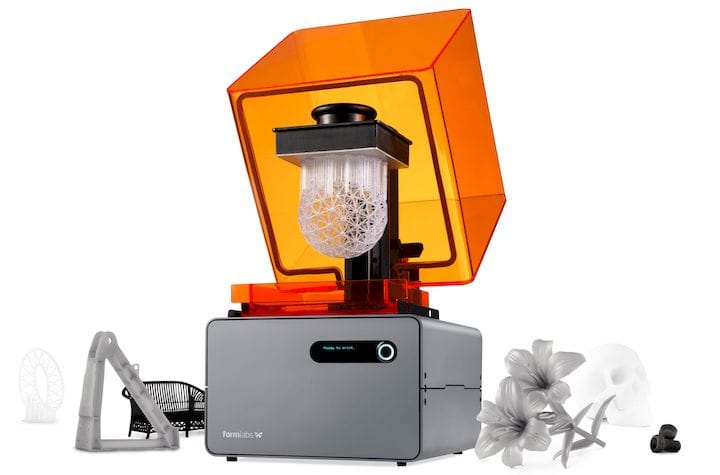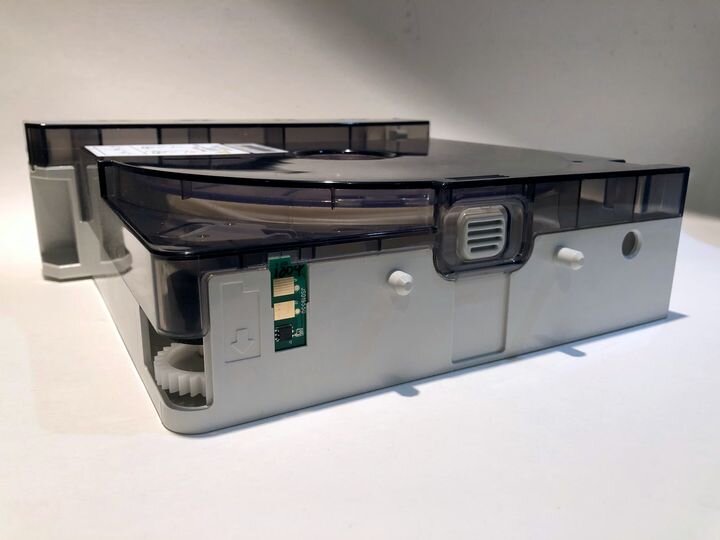![The now-discontinued Form 1+ 3D printer from Formlabs [Source: Formlabs]](https://fabbaloo.com/wp-content/uploads/2020/05/form_1_plus_overview_result_img_5eb0a8827f99f.jpg)
The now-unsupported Form 1+ 3D printer still has many fans, but some are quite unhappy.
The Form 1+ was one of the most successful 3D printers, being a tuneup of Formlabs’ original Form 1 introduced in 2013. The device at the time was one of the most inexpensive desktop devices that could produce high resolution prints. It was so popular that its success essentially launched Formlabs towards its current state as one of the industry leaders.
Like any reasonable company, Formlabs examined the experiences of Form 1 and Form 1+ users very carefully and devised plans for a new device that would resolve issues, improve efficiency, increase quality and reliability. This turned out to be the now very popular Form 2, which was announced in 2015.
The improvements designed by Formlabs into the Form 2 proved exceptionally popular and the machine was sold by the thousand. In fact, we performed a hands on test with the device and found that indeed it was fabulously easy to use.
Formlabs had somehow made Form 2 even easier to use than the already terrific Form 1+.
Accordingly, the company’s focus then went full on the Form 2. But to their credit they still supported the Form 1+, providing supplies, parts and service.
Until earlier this year.
Today if you examine Formlabs’ website, you will find little mention of the Form 1 and Form 1+. They are not for sale, nor are there resins or spare parts or repair services available.
This has disturbed some users of Form 1+ units, as they are now in a tricky position. While these older printers are not officially supported by Formlabs, it is still possible to obtain materials: just buy Form 2 resins and pour them into the Form 1+ tanks. The Form 1+ resin tanks that eventually wear out can be refurbished by third parties that sell replacement tanks and surfaces.
But those options don’t guarantee continual use. Sooner or later the machine’s internal components will wear out or break, and require service and spare parts. These are no longer available from Formlabs, who have likely exhausted their original supplies of parts and machines, with no more being manufactured.
Thus current users of Form 1+ 3D printers are living on borrowed time. This has upset some, and this publication has received angry notes from them.
Their position is that the Form 1+ was and still is a very successful and useful machine and thus it should still be supported by Formlabs. They’ve invested (for them) considerable sums into their Form 1+ and associated operations, and don’t wish to lose it. They feel the Form 1+ is still perfectly usable for their application and wonder why they can’t continue to use it.
The answer is that Formlabs has moved on. It is usually inefficient for a company to support more than one device. In their case they can make more money by putting their resources toward the new machine than by supporting older equipment. In fact, the company recently announced new equipment that attacks a market entirely different than that targeted by the Form 1/2 series.
I don’t think Formlabs will change their support strategy regardless of how much the Form 1+ users complain.
But what are they to do? What should they have done?
My advice to Form 1+ users is to consider transitioning to a Form 2, which is clearly a superior machine. The Form 2 could provide several functional advantages due to its more advanced design. Yes, this will incur some cost, but that is the price of keeping current.
Companies that invest in equipment should always consider the expected lifetime of the equipment. Some companies literally lock this in with multi-year leases that match the usage of the equipment.
In this case Formlabs announced the Form 2 in 2015 and discontinued its predecessor three years later in 2018. This is an official machine lifetime of four years. It would have been reasonable to plan for machine replacement, even though machine announcement dates are not specifically known in advance.
However, what IS known is that every machine will eventually be replaced. This should always be under consideration by machine operators, with contingency plans being made.
Machines don’t last forever. They will eventually break and be unrepairable. That situation is clearly beyond the machine’s expected lifetime.
The good news, though, is that new, replacement equipment is almost always better.











Formlabs just issued three new videos for beginners to 3D printing, and the result was quite surprising.